Rijksmuseum
Description
The Rijksmuseum in Amsterdam is the largest museum of the Netherlands. The collection contains 1.1 million (art) objects from and relating to the Netherlands from the Middle Ages until the 20th century. The museum receives over two million visitors a year with a stunning building, surprising decor, beautiful exhibitions, lively events and many pleasant facilities for young and old.
The Rijksmuseum’s dynamic and diverse Conservation & Science (C&S) Department is housed in the AtelierBuilding across the street from the Rijksmuseum. The C&S department is responsible for the conservation, restoration and scientific research for the Rijksmuseum collection. It contains of six conservation sub departments and a science sub department. The Atelierbuilding hosts the conservation training program of the University of Amsterdam, the Scientific Department of the Cultural Heritage Agency of the Netherlands (RCE) and the Netherlands Institute of Conservation, Art and Science (NICAS). The strong collaboration between conservators, scientific researchers and art historians in the three institutes makes for an interdisciplinary and inspiring environment.
Within the GoGreen project the Rijksmuseum (RM) contribution focusses on WP3 and WP4. The aim of WP3 is to develop innovative green methods for the cleaning of paintings (mural and easel paintings) and historical metal artefacts (silver) inspired by historical recipes and recently developed green methods, to substitute traditional environment- and operator-unfriendly methods without reducing the desired performances. The aim of WP 4 is to propose green solutions for the stabilisation (including consolidation) of heritage objects from metal and glass substrates, as alternative to the traditional environmentally unfriendly methods. For both WPs, the RM lead the task ‘In-situ application of the best-performing technologies on selected case studies’. The work will be performed by close collaboration between sciences, Social Sciences and Humanities experts and research partners.
Contribution
Contribution RM’s contributions to the project will focus on WP3 and WP4. The aim of WP3 is to develop innovative green methods for the cleaning of paintings (mural and easel paintings) and historical metal artefacts (silver) inspired by historical recipes and recently developed green methods, to substitute traditional environment- and operator-unfriendly methods without reducing the desired performances. The aim of WP 4 is to propose green solutions for the stabilisation (including consolidation) of heritage objects from metal and glass substrates, as alternative to the traditional environmentally unfriendly methods. The work will be performed by close collaboration between sciences, Social Sciences and Humanities experts and research partners. This core objective will be achieved by focusing on the following tasks: 1. Selection: traditional methods recognized as effective will be selected and evaluated as benchmark (T4.1). Historical methods based on natural products (T4.2) as well as pilot and recently developed methods inspired by green synthesis (T4.3) will be selected based on the parameters of greenness defined by the GoGreen project (see methodology section). will be validated on real case studies (T4.4).

Joosje van Bennekom
Joosje van Bennekom studied Biology and Metal Conservation. She is the head of the Metal Conservation & Science department of the Rijksmuseum Amsterdam. The daily practice consists out of the conservation, restoration and material science of mainly early modern objects, with the focus
on silver. She also coordinates the making of the Dutch silver alloy database, which uses handheld
XRF data.
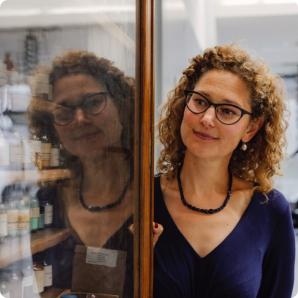
Katrien Keune
Katrien Keune (Rijksmuseum/UvA) is head of Science at the Rijksmuseum Amsterdam and full professor by special appointment of Molecular Spectroscopy at the University of Amsterdam (UvA), Netherlands. The Science department, a sub-department of Conservation & Science, conducts research on the Rijksmuseum collection in close collaboration with conservators, curators and (technical) art historians. Keune is specialized in ageing and degradation studies of pigments and oil paintings at the micro- and molecular level. She initiated and (co)led many national and international interdisciplinary research projects including the scientific research of Operation Night Watch, the largest research project on Rembrandt's masterpiece.
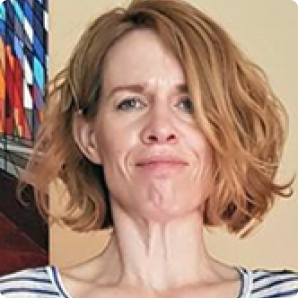
Gwendoline Fife
Gwendoline R. Fife is an art conservation consultant, Director of Sustainability in Conservation’s Greener Solvent Project, and currently working for the Rijksmuseum and KiCulture across multiple WP’s in the European Project, Green Strategies To Conserve The Past And Preserve The Future Of Cultural Heritage, GOGREEN (Horizon Europe). After obtaining her chemistry degree from York University, Gwen trained in easel painting conservation at the Courtauld Institute of Art, London. Following her Mellon Fellowship at the Walters Museum in Baltimore, she worked for over 20 years as a paintings conservator and researcher in various museums and institutions in the USA, Ireland, and The Netherlands. She has regularly published her work and research, and with expertise in solvent effects on paint films she has been providing international lectures and workshops on sustainable solvent approaches in conservation practice since 2009. In her practice she aims to provide clients and organisations coordinated solutions with the best treatment approaches for the individual artwork.
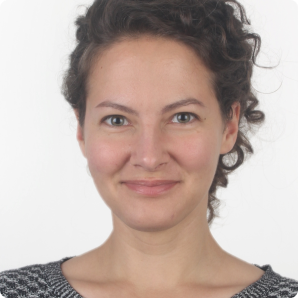
Julia Wagner
Julia Wagner, a volunteer for Sustainability in Conservation (SiC) since 2017, is a ceramics and glass conservator currently working for the Rijksmuseum and KiCulture on the research project GoGreen (EU Horizon). She is also working on a research project at the Royal Institute for Cultural Heritage KIK-IRPA (Belgium) which will contribute to the cleaning of ceramics affected by the floods in 2021. After her studies of the Japanese language and culture at the University of Vienna (Austria), she obtained her MSc in Conservation and Restoration of Cultural Heritage specialising in ceramics, glass and stone at the University of Amsterdam UvA (The Netherlands) in 2019. Her Master thesis (nominated for the Rijksmuseum-Migelien Gerritzen thesis award) investigated the deterioration of Japanese lacquer on a porcelain bowl from Huis ten Bosch palace. She subsequently graduated from the Advanced Professional Programme in ceramics and glass conservation at the UvA in 2021, working as an intern for the Rijksmuseum Amsterdam (The Netherlands) and the Historische Museum Basel (Switzerland). Her Post-master thesis investigated the use of the red algae, Funori, for consolidation of friable white coatings on Greek and Roman terracotta figurines.

Momoko Okuyama
Momoko Okuyama is a freelance painting conservator and junior research scientist for GoGreen at the Science team of the Rijksmuseum. She earned an MSc degree followed by a post-master’s in the conservation and restoration of cultural heritage with a specialization in paintings in 2023 from the University of Amsterdam. The topic of her master thesis was the development of a diagnostic tool for identification of fatty acid efflorescence in paintings. Between 2021 and 2023, Momoko worked as a trainee paintings conservator at Stichting Restauratie Atelier Limburg and at the Frans Hals Museum and conducted research on a polysaccharide-based gel for the sustainable cleaning of paintings.
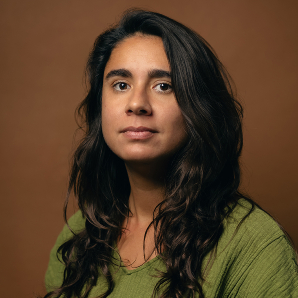
Bianca Gonçalves
Bianca Gonçalves, originally from Brazil, is an independent paintings conservator working between the Netherlands and Brazil under the name Atelier CurArte. She holds a BA in Conservation and Restoration from the Polytechnic Institute of Tomar and a BA+MA in Paintings Conservation from ENSAV La Cambre in Brussels, where her master’s thesis focused on less toxic approaches to cleaning acrylic paintings. She gained experience in private studios in Brussels, Malta, and Italy before working at the São Paulo Museum of Art (MASP). After returning to Europe, she spent two years at Studio Redivivus before establishing herself as a freelancer. Since then, she has contributed to projects across the Netherlands, Australia, and Brazil.
Passionate about sustainability, Bianca integrates greener materials and techniques into her practice while advocating for accessibility in the field. She has volunteered with Sustainability in Conservation (SiC) since 2017 and is currently its social media manager, as well as for KiCulture.
